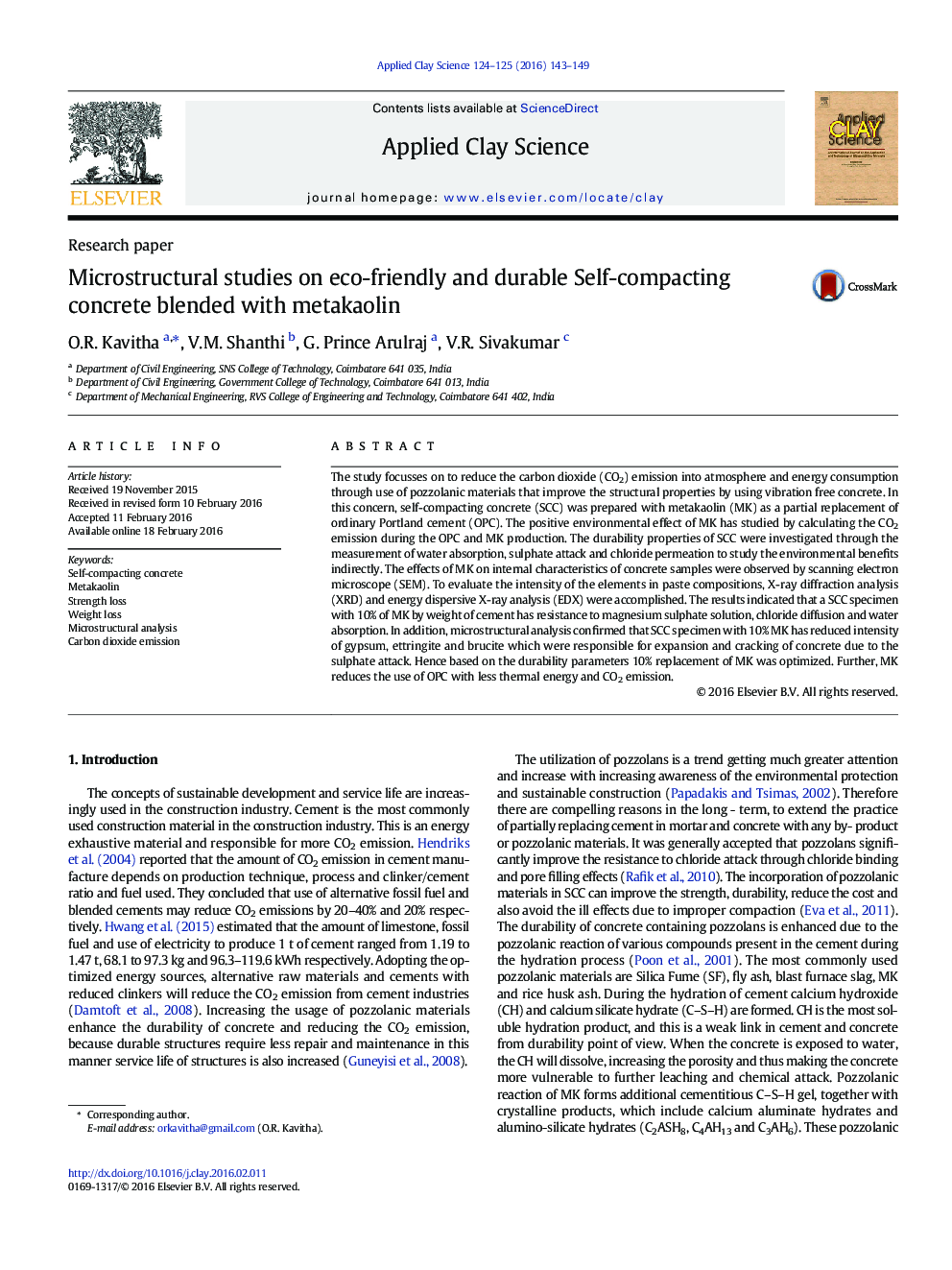| Article ID | Journal | Published Year | Pages | File Type |
|---|---|---|---|---|
| 1694092 | Applied Clay Science | 2016 | 7 Pages |
•MK consumes CH through pozzolanic reaction and made the concrete more durable.•MK blended SCC shows reduced permeability and slow down the ingress of harmful chloride ions.•Optimum replacement of MK was 10% based on durability parameters.•MK exhibited large positive effect by reducing the CO2 emission and consume less thermal energy.
The study focusses on to reduce the carbon dioxide (CO2) emission into atmosphere and energy consumption through use of pozzolanic materials that improve the structural properties by using vibration free concrete. In this concern, self-compacting concrete (SCC) was prepared with metakaolin (MK) as a partial replacement of ordinary Portland cement (OPC). The positive environmental effect of MK has studied by calculating the CO2 emission during the OPC and MK production. The durability properties of SCC were investigated through the measurement of water absorption, sulphate attack and chloride permeation to study the environmental benefits indirectly. The effects of MK on internal characteristics of concrete samples were observed by scanning electron microscope (SEM). To evaluate the intensity of the elements in paste compositions, X-ray diffraction analysis (XRD) and energy dispersive X-ray analysis (EDX) were accomplished. The results indicated that a SCC specimen with 10% of MK by weight of cement has resistance to magnesium sulphate solution, chloride diffusion and water absorption. In addition, microstructural analysis confirmed that SCC specimen with 10% MK has reduced intensity of gypsum, ettringite and brucite which were responsible for expansion and cracking of concrete due to the sulphate attack. Hence based on the durability parameters 10% replacement of MK was optimized. Further, MK reduces the use of OPC with less thermal energy and CO2 emission.
